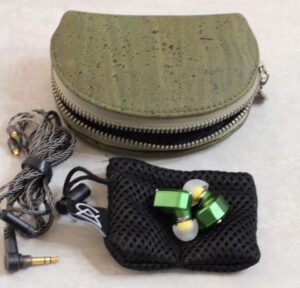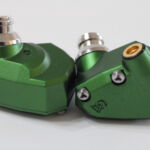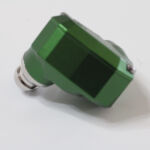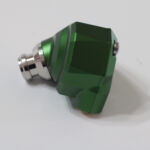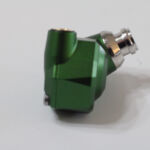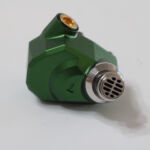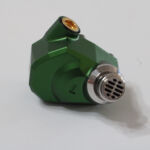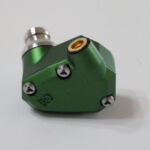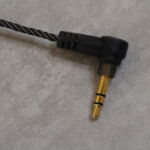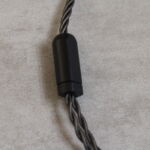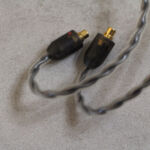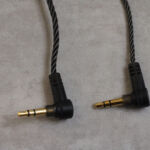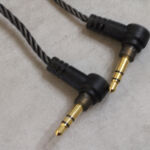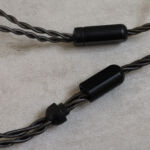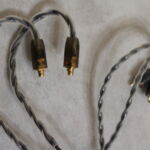Campfire Andromeda 2020
Disclaimer: I was sent the Andromeda 2020, the Solaris 2020, and the Ara as part of a review tour. I was not compensated for this in any way, nor did I get to keep any of the products reviewed. If you have an interest in Campfire products, please check out their website or facebook page.
Unboxing / Packaging:
We can skip this section as all three models arrived in their respective soft cases with the cable and earpieces inside each. Each also have a small two pocket bag that prevents the earpieces from rubbing together during storage to prevent scratches. Campfire has provided good cases for their iems since the outset and the latest models share that although it does make it tough to grab the one you want in a hurry as no labels exist to identify the model from the outside. Case color helps but in the short time I had the Campfire’s I didn’t memorize which color was which.
Build/Fit:
The Andromeda 2000 (Andro2020 from here out) shares the same outer shell dimensions and shape with the original Andromeda, but internally has been updated substantially. The big impetus for the refresh of the various existing models was to move to what Campfire calls a solid-body acoustic design. This is a 3d printed chamber that positions the balanced armatures and provides the sound bores in a single chassis rather than individual sound bores and glue. We’ll talk more on externals shortly, but for now the outer shells are the angular design that has been Campfire’s trademark for years with flat surfaces, rounded edges, and three screws on the face to hold the faceplate to the inner shell. Shells on the Andromeda are anodized a brilliant green to distinguish it from other models in the line with both the inner and outer shell sharing this green ano. The nozzles are a 3rd component and are highly polished stainless steel fixtures with a grate rather than the 3 separate sound bores of the previous generations. The other change that is noted if the previous generation is held side by side with the 2020 is the beveled edges are a bit narrower than the previous model although in realistic terms it makes no difference in fit or comfort. Insertion depth is average with the nozzles having an upward rake and sitting at the front of the body. Isolation is good but not spectacular and here again is changed little from previous generations. I have always found this shell style to be comfortable for long wear and any changes made to design had no impact on that.
Internals:
The Andromeda has always been an all balanced armature model and the 2020 continues that with two bass armatures, a single mid armature and a pair of treble armatures. Campfire has been fairly tight lipped about which models of drivers are used in their various models but the video below does seem to show the numbers on the sides of the bass and mid drivers although this may be an internal tracking number as they don’t correspond to the Sonion or Knowles standard BA Bass drivers. As mentioned previously, earlier models used drivers potted in the housing with individual sound bores to the nozzle. The current version uses a 3d printed shell to hold the BAs and combine the bores into a single exit to the nozzle. Nominal impedance is listed at a very specific 12.8Ω with a sensitivity of 112 dB/mW. My tests showed impedance varied from around the stated 13Ω up to about 65Ω depending on frequency used. The Andro2020 can be driven with a phone or tablet but does do better with more potent sources and an amp is probably advisable in spite of a fairly high sensitivity and low impedance.
Cable:
The standard litz cable that ships with the Andro2020 starts with a 90º 3.5mm jack with good strain relief before exiting as a 4 wire twist up to the splitter. The splitter is black aluminumc with a matching chin slider (although it appears to be plastic). From the splitter up the two wire twists are a looser twist than the 4 wire below and terminate with ear-hooks and mmcx connectors marked R/L for reference. There is no red dot so one has to find the labels which are somewhat hidden. The cable is well made, and durable, but honestly I’d prefer the heavier super Litz that ships with the Solaris. At first glance the two cables look very much alike but the super litz is heavier with twice the strand count of the standard. One has to wonder if the Super Litz is the premium cable, why it isn’t the default on iems with an asking price of over $1000. The 1st set of photos below are the stock cable, followed by a compare of the Litz vs the Super Litz.
Below is a comparison of the Litz vs Super Litz cables with the Super on left (or bottom in the case of the splitters photo).
Sound:
Bass:
Sub-bass is still not an emphasis on the retuned Andro2020 with good speed and extension, but a lack of power in the lowest tones. This is not atypical of BA produced sub-bass and while the Andro does a good job of toning down some of the characteristics of all ba models, it can’t escape the lack of sub-bass impact that so frequently is a knock on the genre. Mid-bass fares considerably better with good tonality and bit more weight but still stops short of the slam of the better dynamic drivers. The upside of course is a very linear presentation with no bass bleed and a transition into the mids that is so clean it can be tough to pinpoint. I found the Andro very good for classical, jazz, and even classic rock, but lacking some impact in the lows for things like EDM and house. No one expects this to be a basshead iem, but some added slam and rumble may be the biggest unanswered detractor from the original and now the 2nd generation.
Mids:
My hope was the new version wouldn’t be a big step backward in the mids as the Andromeda had solid mids, but it was kind of a weak point in the original so regression here would be bad. Lower mids follow mid-bass with good linearity and manage some weight but fall short of full or lush. Lower mids are well detailed with good tonality and a bit of note-weight but at times struggles a little to portray small changes in inflection and pitch. Male vocals are a step behind their higher voiced counterparts due to an upper-mid emphasis as well. Guitar growl is very good with ragged edges and a nice guttural feel. As we move up into the mids and upper-mids, we lose a bit of that weight in favor of a bit more clarity and energy. Strings have good tonality and energy. Female vocals do cut through the mix a bit more than lower vocals and have good energy but stop a little short of the original Andromeda. I found them a bit less strident than the original on tracks that tended that way. This is a clear adjustment to the criticism of the original having a hot treble and upper-mid that could be sibilant at times.
Treble:
The original Andromeda had either great air and top end, or too much treble depending on who you ask. I fell in the first camp as I thought the original did a masterful job of walking the line but other’s who I respect took the opposite stance. My guess is that enough people thought of the treble on the original as a bit too hot as Campfire has made the largest adjustments in this range. Gone is the large emphasis that defined the original, replaced with a much smoother but not as energetic treble presentation. Extension is still quite good, but the treble is much less in your face and you’ll have to work a bit harder to hear tones above about 11kHz as it falls back fairly quickly above that point. Snare rattle is good and crisp and cymbals have good sound but can lack a touch of energy at times for my tastes.
Soundstage / Imaging:
Stage is quite good for a closed back in-ear and while width is slightly larger than depth, it does retain good dimensionality and even some height. Seating the orchestra is straight forward with good instrument separation and placements being very cleanly delineated. Layering is very good as well with little or no tendency to compress during busy passages to the point the Andro seems to thrive on faster material. Imaging is the strong suit of the Andro2020 as well with the ability to position things very clearly in space and even small movements to be easily trackable and precise.
Comparisons:
Since they sent all three of the top models, it seems only fitting that I try and answer the “So which one should I get?” question that will come up for anyone perusing the Campfire website with cash in hand.
Ara:
The Ara looks and feels like the Andromeda 2020 in hand and the two ship with the same accessories as well (including the same cable) so separating the two on physical attributes is a near impossibility unless you just love green or grey or are a big titanium fan.
Andromeda 2020 and Ara are both about equally easy to drive and both can be susceptible to hiss on high powered sources so again no huge separation there. Sound wise, the Andromeda has a bit more detail and a bit hotter treble compared to a bit more bass on the Ara (not surprising with a quad of bass tuned BA) and a more polite upper range. Both sound like all BA models in that bass is very clean and fast, but not as impactful as possible although the Ara does mitigate that to a degree. If you are looking for even more slam and rumble, there is always Solaris. Mids are a bit more linear on the Ara compared to the upper-mid push of the Andromeda, which makes the Ara a bit less strident and the better tuning for those sensitive to sibilance. I really enjoyed the Andromeda more than the Ara for a long period and actually wondered why they had made the Ara rather than focusing on the other models, but then, I ran into a couple live tracks that really showed off the Ara’s capabilities. This is where Ara comes to life and shines compared to the Andro with the the Ara giving a more realistic performance and the Andro feeling more controlled and processed comparatively.
Solaris 2020:
The Solaris 2020 is a slightly larger than either of the other two and has a different shape so fit may favor either the Andro/Ara or Solaris2020 and it is worth auditioning these before purchase although I found the 2020 version much more comfortable than the original Solaris. Build quality is roughly the same between so again no huge point scored on build but the Super Litz cable is a step up on the Solaris so that is points in its favor. The Solaris2020 with its dynamic driver is capable of a bit more slam and a bit thicker presentation than either of the other two produce, but sacrifices a touch of speed in the lows to do that and won’t produce quite as clean tone with exceptionally busy passages as a result. The biggest difference in the Solaris2020 vs Andro2020 and Ara is that the Solaris seems to be tuned for as smooth and effortless a delivery as possible while being willing to sacrifice a few micro-details and a bit of imaging in order to be able to reach that. The Andro2020 and Ara on the other hand are not quite as smooth or effortless, but bring a bit more detail and improved imaging to the picture in the trade off.
Thoughts / Conclusion:
The Andromeda has long been a favorite in the Campfire line for me along with the Atlas as I think these two models were the sweet spot in the market where you got the most bang for the buck. I get a bit concerned when anyone takes a popular model and “fixes” it as more often than not, I like the broken one better. Thankfully this is not the case with the Andromeda 2020. It manages to keep pretty much everything I liked about the original and does indeed tone down the hot spot in the treble of the original that even I found could get fatiguing during long listening sessions. For those who utterly hated the original, you probably wont fall in love with the 2020 although it might lessen the vitriol a bit. For that already loved the Andromeda, again the 2020 probably won’t change that (which is a good thing). And for the fence sitters out there, this takes away most of the arguments leveled against the original and may just be the shove needed to pick up an Andromeda to call your own. The Andromeda 2020 is well worth an audition and still my favorite among the Campfire models I have tried.
-
Bass - 7.5/107.5/10
-
Mids - 7.5/107.5/10
-
Treble - 8/108/10
-
Soundstage - 9/109/10
-
Imaging - 9/109/10
Summary
Pros: Most of the things that made the 1st gen Andromeda popular are still on full display. Great Stage, great tonality
Cons: Hiss with high powered sources, a bit bass light.


